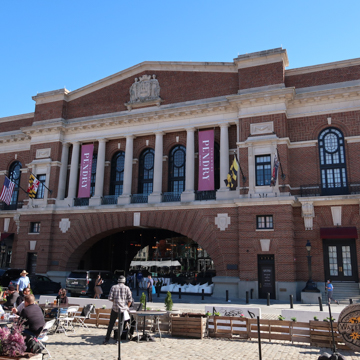The pier functioned as both a social center for the local, largely immigrant community and as one of the East Coast’s largest ports of entry for the shipping trade. Modeled after the public piers that appeared in British seaside towns, it included a dance hall and other spaces for social and educational gatherings. With ferry service between it and Locust Point across the river, the pier served as a point of passage for immigrants newly processed at the Locust Point Immigration Station. And as part of a working pier, it housed the offices of the harbormaster. The building combines elements of Georgian Revival and Beaux-Arts classicism, encompassing a great hall manifest on the exterior facade by full-height arched windows behind an arcade of Doric columns. The rusticated ground level’s wide entrance portal facilitates both pedestrian and vehicular access to the pier. Left vacant for many years, the building’s transformation into a boutique hotel was completed in early 2017. The ballroom once occupied by immigrants is now an opulent banquet hall.
You are here
FELL’S POINT RECREATIONAL PIER
If SAH Archipedia has been useful to you, please consider supporting it.
SAH Archipedia tells the story of the United States through its buildings, landscapes, and cities. This freely available resource empowers the public with authoritative knowledge that deepens their understanding and appreciation of the built environment. But the Society of Architectural Historians, which created SAH Archipedia with University of Virginia Press, needs your support to maintain the high-caliber research, writing, photography, cartography, editing, design, and programming that make SAH Archipedia a trusted online resource available to all who value the history of place, heritage tourism, and learning.


